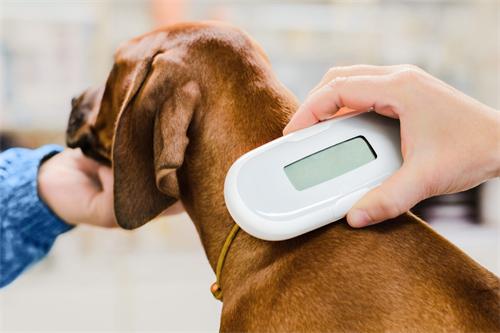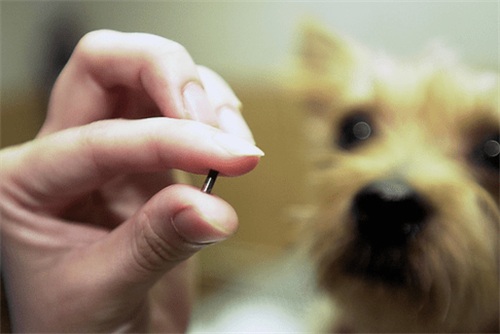The Role of Microchips: Preventing Pet Loss and Enforcing Animal Welfare Laws

Every year, millions of pets go missing worldwide. For many pet owners, the thought of their beloved pet going missing is a nightmare, too real to be true. While traditional identification methods like collars and tags have been used for generations, they are not foolproof—collars can break, and tags can fade or be removed. The advent of microchips has revolutionized pet safety.
Microchipping is not only a technological innovation; it also saves lives, promotes responsible pet ownership, and strengthens animal welfare laws worldwide. As more and more regions adopt microchipping requirements, it is crucial for every pet owner to understand its role and responsibilities.
What is a microchip? How does it work?
A microchip is a tiny, rice-sized electronic device, typically encapsulated in biocompatible glass, that is implanted under the pet's skin, usually between the shoulder blades. The chip contains a unique identification number that is linked to the owner's contact information stored in a secure registry. Once scanned with a compatible reader, the number instantly accesses the registration data, allowing veterinarians, shelters, and animal control personnel to identify and contact the rightful owner.
The entire process is simple, quick, and virtually painless. The needle used for implantation is slightly larger than that used for vaccinations, and no anesthesia is required. Once implanted, the chip remains functional throughout the pet's lifespan, requiring no maintenance or battery replacement.
Why Microchipping is Important: Preventing Pet Lost?
1. Unparalleled Reliability of Reuniting Pets with Their Owners
Statistics consistently show that microchipped pets are more likely to be reunited with their families. For example, microchipped dogs are more than twice as likely to be returned home as other pets, and microchipped cats are up to twenty times more likely to be reclaimed. Because microchips are implanted in the pet, they cannot be removed or lost, unlike collars or tags, which can easily fall off.
When a stray pet arrives at a shelter, the first step is to scan the chip. If the information is accurate, the owner can be contacted within minutes—potentially preventing a permanent loss and leading to a joyful reunion.
2. Essential for Emergencies and Natural Disasters
Natural disasters like floods, hurricanes, and wildfires displace countless pets. Microchips can help reunite pets with their families even if their external identification devices are destroyed. In emergencies, when thousands of animals are displaced simultaneously, rescue organizations often rely on microchip scanners as a first line of identification.
3. Preventing Pet Theft
Microchipping is also an effective deterrent to pet theft. Microchipped pets are easily tracked, making it difficult for thieves to sell or rehome them undetected. In cases of ownership disputes, a registered microchip provides definitive proof of a pet's legal guardian.
4. Reducing Shelter Overcrowding
Unidentified lost pets are often taken to shelters, but their survival prospects are uncertain due to limited space and resources. Microchipping ensures their rapid reunion, reducing the number of animals occupying shelter space and freeing up resources for truly homeless or neglected pets.
The Role of Microchips in Animal Welfare and Law Enforcement
1. Proof of Ownership in Legal Disputes
Microchips are often used as legal proof of ownership in cases of theft, custody disputes, or abandonment. Owner information registered in the database clarifies responsibility and ensures that animals are returned to their rightful homes.
When investigating cases of neglect or abuse, microchips can also help authorities trace animal ownership and hold individuals responsible for animal welfare violations accountable.

2. Enforcing Responsible Ownership
Many regions now require microchipping as part of their animal welfare and licensing regulations. These laws encourage owners to take responsibility for the care and whereabouts of their pets. They also make it easier for municipalities to manage stray animal populations, verify vaccination records, and identify animals involved in bites or accidents.
3. Supporting National and Local Animal Control Systems
Microchipping improves the efficiency of animal control and shelter systems. All found animals are scanned upon receipt, streamlining the rehoming process and ensuring more accurate records. It also helps identify repeat abandonments or unlicensed breeders, providing authorities with a clearer picture of pet management in the community.
4. Combating Illegal Breeding and Trade
Microchipping can also play a role in regulating breeding practices. In some countries, microchips are used to track breeding activities, verify pedigrees, and ensure that animals sold by breeders are healthy and legally registered. This transparency helps combat illegal puppy mills and exotic pet trafficking.
Common Misconceptions and Challenges
Despite the many benefits of microchipping, misconceptions about it persist. Addressing these issues can help pet owners make informed decisions.
1. Microchips Are Not GPS Devices
One of the biggest misconceptions is that microchips work like GPS trackers. In reality, they do not transmit a pet's real-time location. They only provide identification when scanned by a compatible reader. To track pets, pet owners should use a microchip in conjunction with a wearable GPS collar or smart tag.
2. Database Management Issues
A microchip's effectiveness depends on its registration information. If the owner's contact information is out of date, the chip is virtually useless. In fact, one of the most common reasons microchipped pets cannot be reunited with their families is incorrect or missing data. Pet owners must update their information when they move, change their phone number, or transfer ownership.
3. Different Registries and Compatibility Issues
The numerous microchip manufacturers and databases can sometimes lead to compatibility issues. Fortunately, universal scanners and unified databases are becoming increasingly common, allowing for more seamless cross-system searches.
4. Concerns about Security and Privacy
Some users are concerned about health risks or privacy issues. Microchip materials are biocompatible, and adverse reactions are extremely rare. The chips store very little data—typically just an identification number—so privacy risks are minimal compared to the benefits of the chips.
The future of pet microchips may involve smarter, more integrated systems. Some companies are experimenting with chips that can store health data, vaccination history, or biometric information. Others are developing microchips that can sync with smart collars or cloud-based health platforms to improve veterinary access to medical records.
However, ethical considerations must always be paramount, especially regarding privacy, data security, and misuse of technology. As microchip technology advances, regulations will need to evolve to protect animals and their owners.
Microchipping has become one of the most powerful tools in modern pet care—a silent, effective, and permanent way to connect with our pets. It bridges technology and compassion, offering hope to families who might otherwise have lost their beloved companions.
Beyond reuniting pets with their owners, microchipping strengthens the foundation of animal welfare laws, prevents pet neglect, and supports humane law enforcement. As more and more regions around the world adopt this lifesaving technology, pet owners everywhere have a responsibility to use it wisely—keeping up to date information, complying with legal requirements, and viewing microchipping as a necessary act of love and responsibility, not a choice.
Ultimately, a microchip is more than just a technology—it's a silent guardian beneath the skin, ensuring that no matter how far a pet wanders, it can always find its way home.



